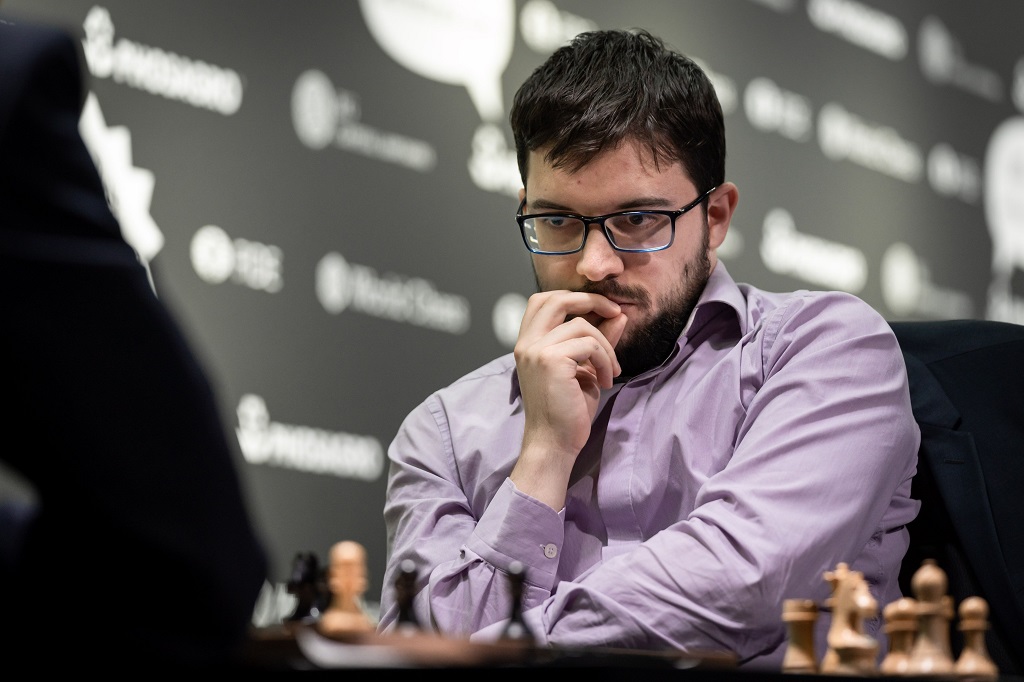


Veselin Topalov and Maxime Vachier-Lagrave never recoil from fighting if given the chance. Thus, their encounter was the biggest highlight of Monday's round in Riga. After the Frenchman's victory, though, things look bleak for the former world champion, who will have to win on Tuesday, with Black, against a younger, highly prepared opponent. But the Bulgarian is not one to leave without a fight, and probably will have something in store for this kind of situations.
None of the other games finished decisively, nor they lasted more than forty moves, but both Jan-Krzysztof Duda and Alexander Grischuk tried hard with the white pieces — the Polish GM succeeded to get Shakhriyar Mamedyarov in trouble, while the Russian was actually slightly worse for a while against Yu Yangyi. Sergey Karjakin and Wesley So drew after 17 moves.
Click or tap any result to open the game via Live.ChessBase.com
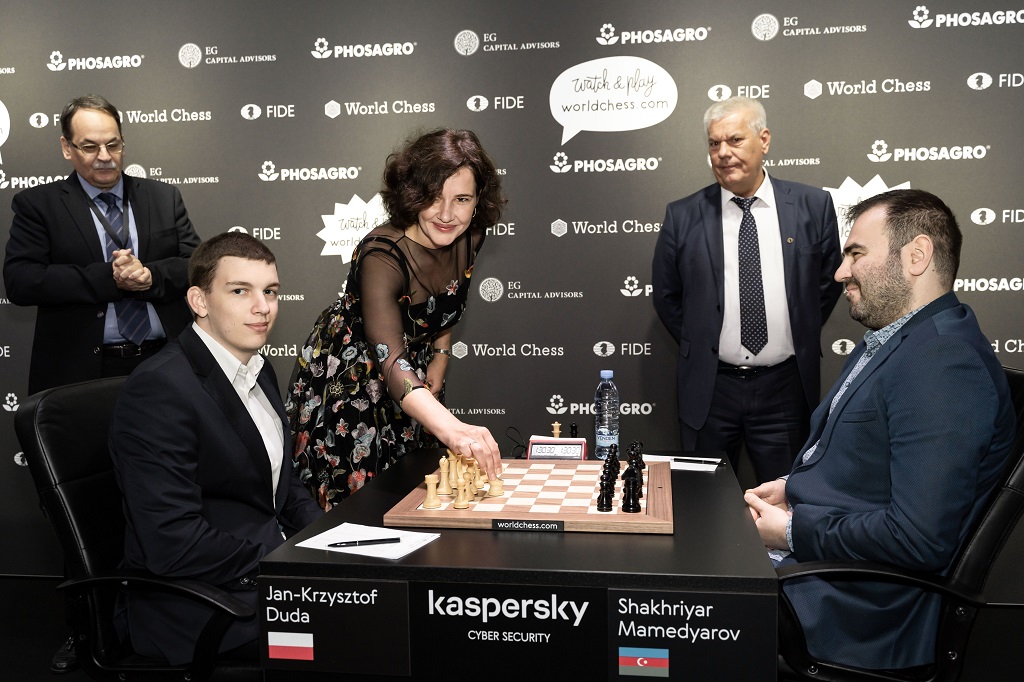
WGM Dana Reizniece-Ozola made the ceremonial first move | Photo: Niki Riga / World Chess
Accepting to play the Sicilian against Maxime Vachier-Lagrave is an act of courage, but Veselin Topalov has made a name for himself by taking the bull by the horns repeatedly during his career. Furthermore, the former world champion went for a particularly sharp line:
Only Emil Sutovsky had dared to opt for 11.♘f4 in this position before. White is ready to give up a knight under the best possible circumstance — or when Black plays ...e5, leaving some holes in his position. After over twenty-four minutes, Vachier-Lagrave responded with 11...♝b7, and Topalov spent more than half an hour on his next two moves: 12.♕xb4 ♛c8 13.♕d2. Clearly, the Frenchman had seen this line and quickly played 13...e5, setting up what would unsurprisingly become a sharp struggle.
On move 21, Black decided to release some of the tension by trading two of his pieces for a rook and two pawns:
Vachier-Lagrave was simply an exchange up after 21...♞xe4 22.fxe4 ♝xe4+ 23.♔a1 ♝xh1 24.♖xh1. The 28-year-old from Nogent-sur-Marne had the material edge but his king was rather vulnerable on the queenside, and he had many pawn weaknesses on the other flank of the board.
The queens left the board on move 40, and a complicated endgame ensued. White gained two pawns shortly afterwards, but Vachier-Lagrave got a dangerous passer on the g-file in the meantime:
The Frenchman analysed his game with the commentators and noted correctly that this was the position in which Topalov faltered — instead of 49.♔c1, he needed to go for 49.♗f5, prioritizing the elimination of the g-pawn. From this point on, Vachier-Lagrave showed great technique until getting the win nine moves later.
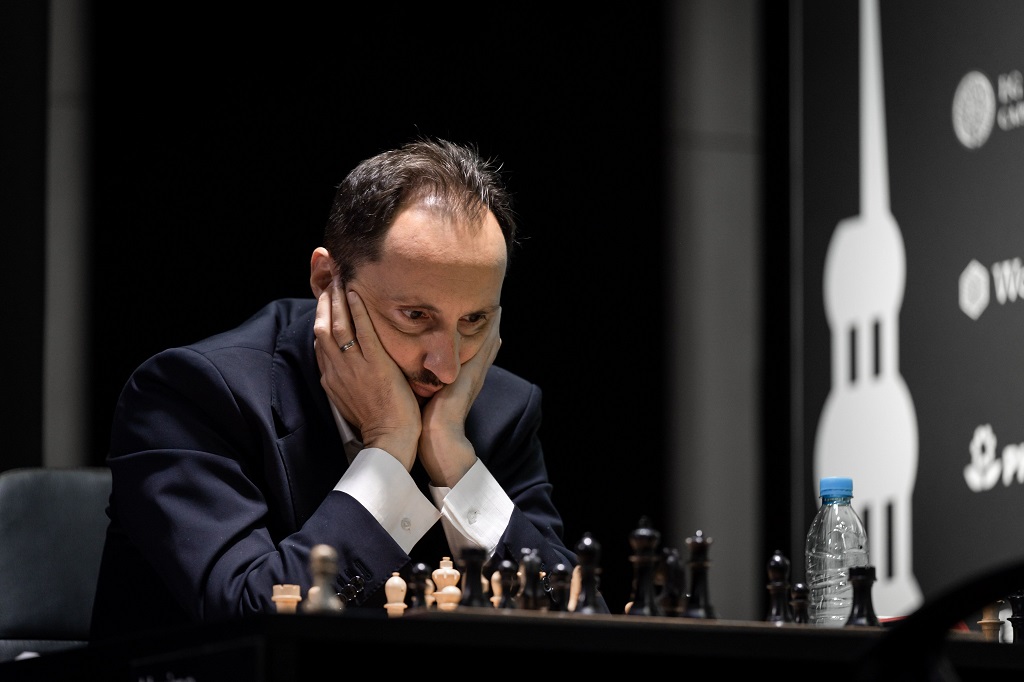
Former world champion Veselin Topalov | Photo: Niki Riga / World Chess
Jan-Krzysztof Duda showed he is in good form all throughout his match against Peter Svidler, and now got a good position in his first encounter against Shakhriyar Mamedyarov. The Polish grandmaster confessed that it is tough to prepare for a game against his Azeri colleague, as Mamedyarov has a versatile repertoire with both colours. In Monday's game, Duda decided to close the position and get a stable advantage, but his opponent pushed the f-pawn in time to avoid getting in deep trouble:
Black continued 14...f5 and then pushed his pawn further down the board after 15.♘df3 ♚h8 16.♘e5 ♞xe5 17.dxe5 f4. Duda later commented that had he been able to put his own pawn on f4 his chances would have improved greatly.
Mamedyarov was under pressure in the middlegame, but both players agreed that probably the assessment of the computer favours White's position more than it should. The draw was signed after 34 moves.
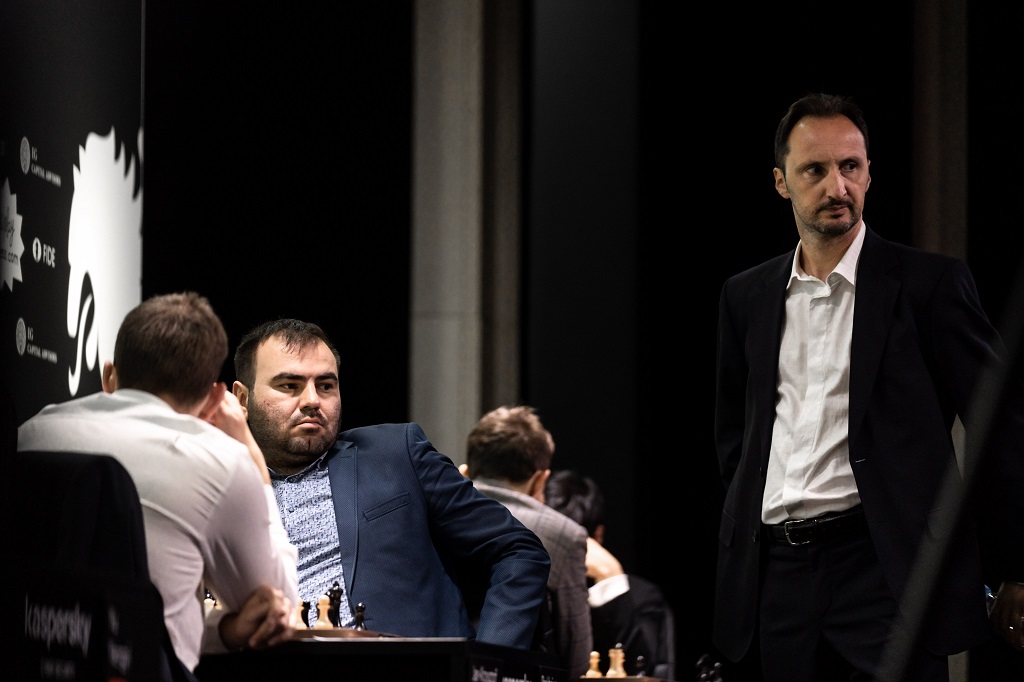
There is no lack of fighting players in Latvia — Veselin Topalov walking around while Shakhriyar Mamedyarov faces Jan-Krzysztof Duda | Photo: Niki Riga / World Chess
Yu Yangyi played a solid opening with the black pieces, but Alexander Grischuk nonetheless tried to get something from his 'white game'. By move 15, the Russian grandmaster had already pushed his h-pawn to an unsafe spot and, instead of defending it, he went for the initiative:
The game continued 15.♘e5 ♝xh4 16.♕g4 f5 17.♕g6. White was a pawn down and had spent almost an hour on his last four moves, but he was the one with the initiative. Yu Yangyi kept on finding accurate positional manoeuvres, however, and in the end Grischuk was the one happy with the draw.

Alexander Grischuk got second place in the first leg of the Grand Prix | Photo: Niki Riga / World Chess
Wesley So played a Petroff Defence that followed a Navara v Gelfand game from this year's Prague Masters tournament all the way to the end after 17 moves (Navara and Gelfand signed a draw after 100 moves in the Czech capital). The American said he got this idea after seeing Duda's treatment of the Russian Defence in his first game against Mamedyarov, while Karjakin explained that he had not planned to look for a quick draw despite being tired after his long play-off session against Anish Giri:
Of course, I am very tired after yesterday's games, but still I cannot say that this was my plan — I was White and I came to play chess; I was not thinking if it would be a draw or it would be some fight.
The ball is now in So's court, as he will have the white pieces in Tuesday's return game.
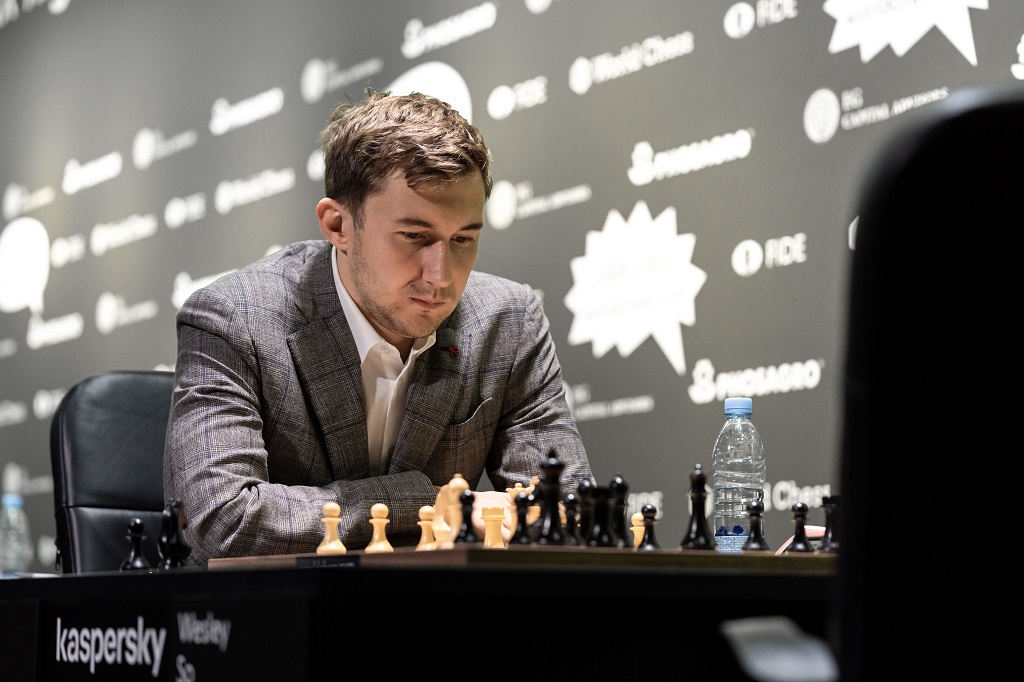
Sergey Karjakin | Photo: Niki Riga / World Chess
Commentary by GMs Evgeny Miroshnichenko and Arturs Neikans